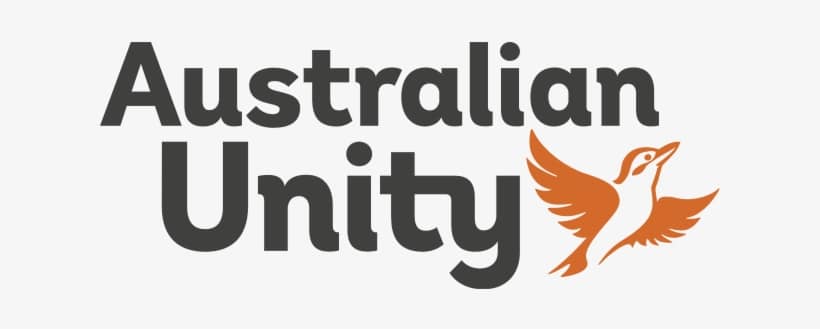Home > Health Insurance > Compare Health Insurance
Compare Health Insurance
Compare private health insurance plans here through Savvy and receive instant quotes from a panel of trusted insurers.
Author
Savvy Editorial TeamFact checked



We’ve partnered with Compare Club to bring you a range of health insurance policies to help you compare them side by side.
Are you looking around for the best health insurance policy for your family? Comparing insurance policies is a vital first step to take towards finding a great policy which can offer the health cover you’re after. Savvy can make it easy to compare policies side-by-side by providing instant quotes online from a panel of leading insurers.
You can compare the cost, coverage offered and the benefits available in one place. Our free, no-obligation quote service can provide you with detailed information to help you make your decision, so start comparing policies with confidence here with Savvy today.
What is private health insurance and what does it cover?
Having appropriate private health insurance can give you access to some of the best doctors and hospitals that Australia has to offer – along with the possibility of choosing when and where you receive your treatment. It can help you avoid long public hospital waiting lists by giving you affordable access to private hospitals and get you the specialist medical treatment you need when you want it. The main types of private health insurance to consider are:
Hospital cover
Hospital cover is a type of insurance that covers you for treatment you receive whilst an in-patient in hospital. It can cover you for many aspects of treatment, including:
- The cost of your stay in hospital, such as possibly having your own private room (subject to availability) and theatre fees
- The fees charged by your health professionals, including doctors, surgeons and anaesthetists
- Tests carried out whilst you’re an in-patient, including blood tests, x-rays, CT scans and MRIs
- Medications administered to you whilst you’re in hospital
- Specific allied health treatment you may need in hospital, for example from rehabilitation specialists, pain management specialists or psychologists
Hospital cover is offered in four tiers: basic, bronze, silver and gold. The cost of your health insurance will depend on which tier of cover you choose to buy, with basic cover being the least expensive and gold cover the most expensive. A basic policy will only see you covered for three restricted clinical categories of treatment: palliative care, rehabilitation and psychiatric care as a public hospital in-patient.
The next level up, bronze, includes an additional 18 clinical categories covered in a private hospital, and silver cover adds a further 29 available categories covered in a private hospital. A gold policy is the highest level of cover you can buy, but is also the most expensive. It offers the maximum coverage available in Australia, including cover for pregnancy and obstetrics care in a private hospital (which may also be available as part of a silver plus policy with some insurers).
Ambulance cover
Ambulance insurance helps you cover the cost of being transported to hospital in case of an emergency, either by road or by air. The amount of cover you may need differs from state to state, as two states in Australia (Queensland and Tasmania) do provide a level of ambulance service for free for their residents. This form of insurance is often provided as part of your hospital cover.
Extras cover
Extras cover can assist you to pay for health care services which are not covered by Medicare, such as dental care and optical services (glasses and contact lenses). It can also offer cover for other forms of holistic and preventative treatments administered to you as an out-patient. Some of the other areas which can be covered by extras cover include:
- Supply and fitting of hearing aids
- Physiotherapy and exercise programs
- Chiropractic treatments on your neck or spine
- Podiatry services
- Dietetics, including assistance with weight loss and nutrition
- Vaccinations for holidays
- Psychology services for assistance with mental health
- Non-PBS pharmaceuticals (medicines not subsidised by Medicare under the Pharmaceutical Benefits Scheme)
This type of insurance also comes in different levels, with the cost increasing as higher levels of cover are added to the policy. Each policy comes with annual limits per calendar or financial year. These limits usually reset each year, either on January 1 or at the start of the new financial year. The dollar amount of those limits will increase as the cost of the policy rises. For example, a cheaper extras policy may cover you for $800 of general dental work, whereas a more expensive policy may allow you to claim up to $2,000 per year.
Combined hospital and extras cover
This is a policy which covers both in-patient and out-patient health services, so it’s a combination of the above two types of insurance. It is possible to combine both types of insurance in one bundle, or to take out hospital cover and extras cover as two separate policies, not necessarily with the same insurer.
Standard exclusions for hospital and extras cover policies
Some of the standard exclusions for hospital cover insurance policies are:
- The cost of medicines prescribed once you’ve been discharged from hospital
- Cost of follow-up GP visits (covered by Medicare)
- Tests, scans and x-rays performed as an out-patient (covered by Medicare)
- Medical procedures not considered medically necessary (for example, liposuction or breast augmentation for cosmetic reasons)
The following areas are typically not covered by extras policies:
- Laser eye surgery
- Some alternative medicines and therapies
How do I compare health insurance policies?
When comparing health insurance policies, there are several key aspects to consider. These include:
The health services you may need
Whilst none of us can predict when an emergency or accident will happen, we can plan our insurance around the services we know we’ll need, think we may need in the future or simply want to cover just in case you may need them down the track. Consider the health services you’ve used recently as a guide to ones you may use in the next year. For example, if you have an existing issue with your feet, you may prioritise a high level of cover for podiatry services.
What you can afford
Once you’ve identified your priorities, think about how much you can afford to pay for health insurance premiums per month. The cost of hospital insurance depends on the level of cover you choose, ranging from very basic cover to gold cover. For inpatient medical services, Medicare may cover up to 75% of the Medicare Benefit Schedule fee, and the remainder is left to private health insurance and you to cover. Be aware that even with top-level cover, you may still have gap fees to pay, so it’s important to look to strike the right balance between cost and coverage. A gap is the difference between the Medicare Benefit Schedule fee for a particular service and what your health practitioner chooses to charge for that service.
The level of cover
Once you’ve determined what type of health cover you need and how much you can afford, match your needs with the cover offered at different levels. For hospital cover, this will determine whether you choose a basic, bronze, silver or gold policy. For extras cover, this will involve looking at the limits per year on offer for various forms of treatment, and deciding which policy offers the best value for your money.
Waiting periods
When first taking out health insurance, waiting periods will need to be served, which can range from two months up to a year. This is the length of time you need to have held a private health insurance policy before you’re able to make a claim on that policy for certain treatments or services. However, some insurers offer reduced or waived waiting periods on extras to attract new customers, so these may be worth looking out for if you have not had health insurance previously. However, once you’ve served your waiting period, you won't need to serve it again for that category of treatment if you switch from one insurer to another on an equivalent level of cover. If you increase your level of cover, you’ll have to undergo the waiting period for that higher level of cover.
Excess and co-payments
Your policy excess is the amount you’ll have to pay when you make a claim on your hospital cover policy. Depending on your insurer, you may not have to pay an excess, while some may give you the option to set it at a specific level. The higher the excess you choose when you take out your policy, the lower your premiums are likely to be. The same applies for co-payments. A co-payment is an amount you agree to contribute towards your hospital stay. Some insurers ask for a co-payment from the first day of a hospital stay, while others don’t require one unless you’ve been in hospital for five days or more.
How much does health insurance cost?
All health insurance policies sold in Australia are subject to the principle of community rating, which means that everyone pays the same for their health insurance regardless of any pre-existing medical conditions. It is illegal to discriminate against anyone based on their health status or claims history, and it is not legal to refuse to insure someone based on their medical history.
The factors which will affect how much you pay in premiums include:
- The level of cover or tier you choose to buy
- The excess you agree to pay
- Whether you agree to any co-payments
- If you are eligible for an age-based discount for people aged 18 to 29 years
- How much you receive from the Australian Government through the private health insurance rebate scheme, which will also depend on your age and income
- Whether you are required to pay a Lifetime Health Cover loading – which applies to Australians who did not have private health insurance in the year they turned 31 years of age. This loading starts at 2% extra on top of the cost of your hospital cover premiums for each year you did not have health insurance over the age of 30. You will pay this additional loading for ten years, but after that will no longer have to pay it.
Types of health insurance
This can help you pay for medical treatment if you need to be admitted to hospital. It can help cover the cost of your admission or accommodation and the fees charged by doctors, surgeons and anaesthetists. It can also cover other costs associated with a stay in a private hospital.
This helps cover the costs of health care treatments outside a hospital setting which aren’t covered by Medicare. This can include major and minor dental treatment, orthodontics, hearing aids, physiotherapy, glasses, contact lenses and podiatry (in most cases with annual limits).
This is a standard health insurance policy designed for a single person, rather than being tailored to cater to the needs of a couple or family. It may include hospital cover plus extras, or either of these types of insurance on their own, depending on what you're after for your health cover.
A family health insurance policy is designed for a family unit including dependent children who may reach up to 31 years of age with some insurers. It offers private health insurance suitable for the whole family and may include shared limits for all members included in your policy.
A health insurance policy aimed at seniors is designed to appeal to people who are in the second half of their life. These are often specific Silver Plus policies that offer the same cover as other health insurance policies, with the exception that pregnancy and childbirth cover may not be included.
Visitors who are in Australia on a temporary basis for travel, work or study may be able to take out Overseas Visitors Health Cover (OVHC). Many visas issued in Australia come with a requirement to take out this type of insurance, which covers visitors who may not be covered by Medicare.
Ambulance cover is generally available either packaged into your private health insurance or on its own as a separate policy or subscription. By having this protection, you could be covered for all eligible ambulance travel in Australia (subject to your insurer's terms and conditions).
The cheapest and most barebones form of private hospital insurance, this can include cover for rehab, in-hospital psychiatric services and palliative care. Having this policy will enable you to avoid paying the Medicare Levy Surcharge (MLS) and Lifetime Health Cover (LHC) loading.
Bronze hospital cover is a step up from basic insurance, including 18 further clinical categories such as ear, nose and throat, bone, joint and muscle, digestive system, joint reconstructions, gynaecology and chemotherapy, radiotherapy and immunotherapy for cancer.
Silver hospital cover is the second-most expensive type of policy and offers the second-most clinical categories. On top of what's offered by basic and bronze cover, it also includes heart and vascular system, lung and chest, blood, hearing device implantation and dental surgery.
The highest level of private hospital insurance available in Australia, gold policies can offer cover for pregnancy and birth, weight loss surgery, assisted reproductive services and insulin pumps on top of all the categories provided by silver, bronze and basic hospital insurance.
Why compare health insurance through Savvy?
100% free service
Our comparison tool doesn’t cost you a cent, allowing anyone to compare offers from trusted insurers around Australia for free.
Compare policies online in one place
You can consider the inclusions, premiums, benefits and other key factors easily with us, whether you’re at home or on the go.
Trusted insurers
Considering offers from trusted insurance providers can help give you peace of mind that you’re comparing high-quality policies.
The pros and cons of private health insurance
PROS
Skip the waiting lists
Having appropriate private health insurance may enable you to get treatment sooner at a private hospital and skip public hospital waiting lists.
Choose where you have your treatment
Having appropriate private health insurance may enable you to choose the hospital where you receive your treatment, depending on availability where you live and local facilities.
Choose your doctor
It may be possible to choose the doctor who provides your treatment, depending on the specialists available in your local area.
Save money on extras
There are many treatments which aren’t covered by Medicare (such as dental treatment) so having extras cover can potentially save you a significant amount of money.
Avoid the Medicare Levy Surcharge
If you don’t have private health insurance, you may be required to pay the Medicare Levy Surcharge, which may be up to 1.5% of your salary depending on how much you earn.
CONS
May be expensive
Private health insurance is an additional expense which you will have to budget for, but it can save you thousands of dollars over the long term.
Waiting periods
You’ll be required to serve waiting periods ranging from two months to a year when you first take out health insurance or upgrade your policy to one at a higher level. However, waiting periods can sometimes be waived on extras policies.
Excess
If you do require hospital admission, you may be required to pay an excess (if you elected to have an excess on your policy when you joined).
Co-payments
You may be required to pay a co-payment for each day of your hospital admission (if you elected to have a co-payment on your policy when you joined).
Tips for comparing health insurance
Write a list of your priorities
Before choosing which level of health insurance to buy, write a list of your health priorities (including any existing conditions) for each individual the policy will cover. Look to ensure the services required to treat these conditions are included in the policy you buy. For example, if you're planning to have a baby in the future, make sure your health insurance covers pregnancy and that you take it out at least 12 months before you conceive, as there is usually a 12-month waiting period for obstetrics services.
Set your budget
By knowing how much you can afford to pay for your private health insurance per month, you can realistically compare policies which offer the maximum benefits within your budget. Make sure you read the product information documents which accompany any quote for health insurance, as this document can give you an idea of what’s included, and what isn’t, in your policy.
Make sure you’re comparing apples with apples
It’s important to make sure you are comparing similar policies when considering costs and inclusions. There would be no point comparing a Bronze Hospital Cover Policy with a Gold Hospital Cover policy, as the bronze policy will offer cover for far fewer clinical categories. It would be like comparing the price of a single hotel room with a three-bedroom apartment suite in the same hotel. Make sure you’re comparing apples with apples when you put two policies side-by-side.
Check all the exclusions
Once you’ve made sure that you're comparing equivalent levels of cover in the policies you’re considering, check all the exclusions listed in the product information documents that come with your quote. The exclusions may include certain types of surgery or procedures or types of treatment. For example, after April 2019, changes were made to private health insurance legislation which excluded certain types of natural therapies such as reflexology, aromatherapy, herbalism and homeopathy.
Compare costs often through Savvy
It costs nothing to get a free quote through Savvy, so it’s a great idea to give your health insurance its own check-up at least once a year. By comparing health insurance policies regularly, you can keep in touch with the latest deals the insurers on our panel may be offering and stand a better chance of maximising the benefits you receive for your money.
Common questions about health insurance
The process of purchasing insurance online through Savvy is straightforward:
- Fill out a simple quote form with basic information about yourself and the coverage you’re after
- Receive a range of quotes online and compare offers from different insurers carefully before you buy
- Provide further information if your chosen insurer requests it
- Either buy the policy right away online or get phone assistance to make your decision
- Receive a phone call from a health insurance specialist to ensure that all your details are correct and to assist you in transitioning into your new policy
They are important because they spell out all the terms and conditions that apply to that particular health insurance policy. These documents are required to be provided by law so that you have a clear understanding of the insurance you are purchasing before you buy. Read your documents carefully to make yourself aware of all the terms and conditions which apply to the policy you’re considering buying.
Some insurers may offer hospital cover discounts for younger people aged between 18 and 29 years. The maximum discount allowable is 2% for each year a person is aged under 30 years, up to a maximum of 10% discount on the standard cost of the policy. Compare discounts to help your insurance dollar go further.
A ‘no-gap’ provider is a doctor or health care provider who only charges an amount that is fully covered by your health insurer or a combination of your insurer and Medicare. This means there’s no further payment required and no gap to be covered by an out-of-pocket payment, as the entire treatment cost can be covered by Medicare.
Helpful health insurance guides
Looking for health insurance to cover your condition or treatment?
Read one of our helpful guides on a range of different ailments and potential hospital or extras treatments to help you find out if they're covered.
Disclaimer:
Savvy is partnered with Compare Club Australia Pty Ltd (AFS representative number 001279036) of Alternative Media Pty Ltd (AFS License number 486326) to provide readers with a variety of health insurance policies to compare. Savvy earns a commission from Compare Club each time a customer buys a health insurance policy via our website. We don’t arrange for products to be purchased from these brands directly, as all purchases are conducted via Compare Club.
Savvy’s comparison service is provided by Compare Club. Compare Club compares selected products from a panel of trusted insurers and does not compare all products in the market.
Any advice presented above or on other pages is general in nature and doesn’t consider your personal or business objectives, needs or finances. It’s always important to consider whether advice is suitable for you before purchasing an insurance policy.
For any further information on the variety of insurers compared by Compare Club or how their business works, you can read their Financial Services Guide.










